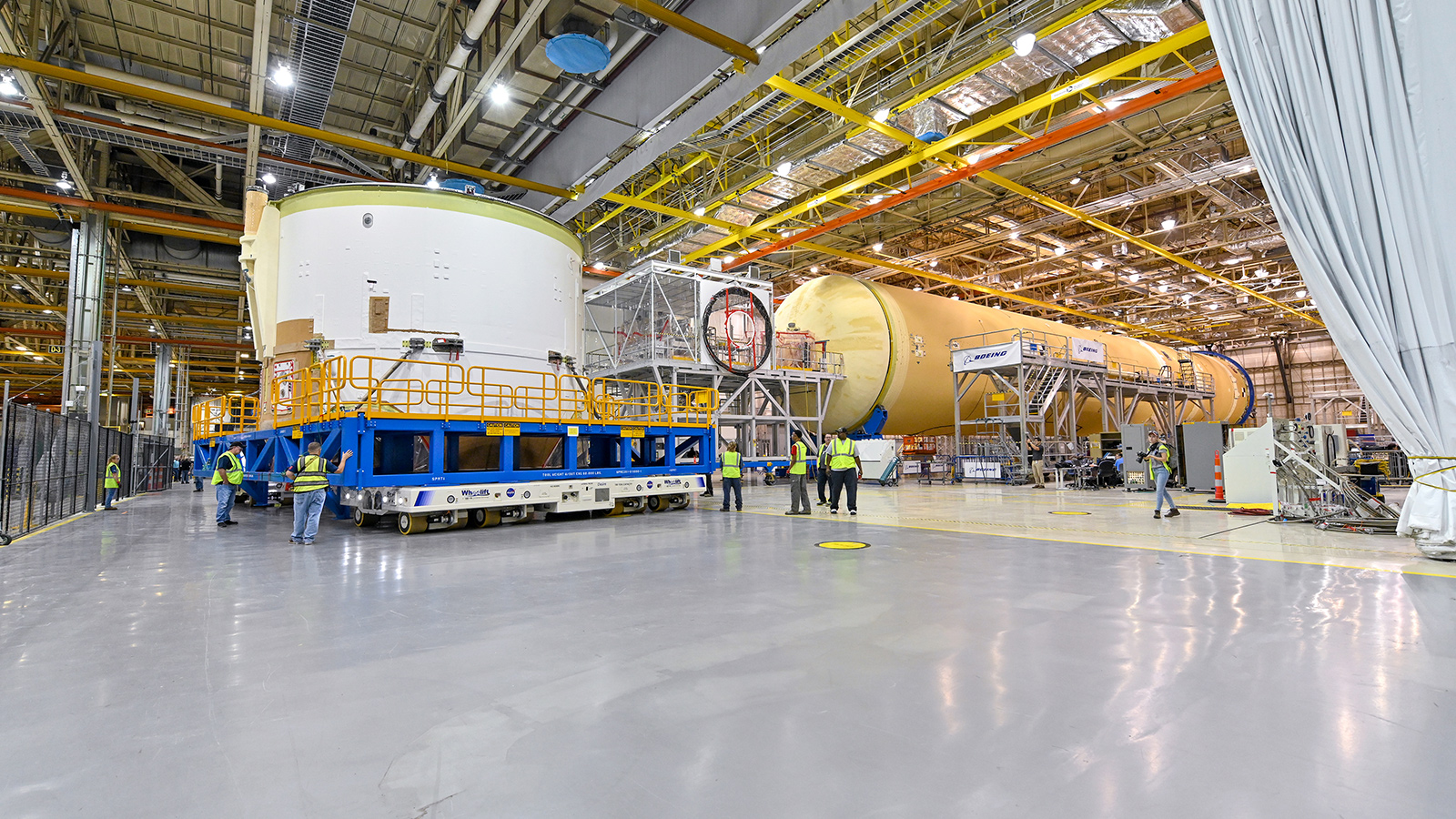Stay Up to Date
Submit your email address to receive the latest industry and Aerospace America news.
Breaking overrun threshold on Space Launch System would mean complications for Artemis 2024 proposal
The clock is ticking for NASA’s Space Launch System rocket program.
Under an agreement with the congressional Government Accountability Office, NASA must recalculate the estimated cost of the SLS program to see if, in fact, the overrun exceeds a 30% threshold that would trigger a legally required reauthorization review by Congress.
NASA tells me the “estimated completion date” for the recalculation is Sept. 30.
The subject of SLS’s cost seems sure to come up during a space exploration hearing scheduled for Sept. 18 by the House Science committee’s subcommittee on space and aeronautics, the panel that drafts NASA’s annual authorization bill. The GAO’s Cristina Chaplain, who oversees SLS audits, is on the witness list along with Kenneth Bowersox, acting associate administrator of NASA’s Human Exploration and Operations Mission Directorate, and past associate administrator over exploration systems Doug Cooke, now an independent consultant.
The GAO reported in June that the overrun was likely at least 29%, not NASA’s estimate of 14.7% or $1 billion, which would also avoid review actions triggered by a 15% overrun. If the new calculation breaks the 30% barrier, the overrun could deal a blow to the Trump administration’s proposed Artemis 2024 moon landing.
An SLS rocket has to be ready in 2024 to launch an Orion capsule and crew to the planned Gateway space station in preparation for the Artemis landing. Two precursor missions also would need to be launched before 2024: an uncrewed test mission and a subsequent launch that would send astronauts around the moon.
If the threshold is crossed, NASA would have to conduct a detailed analysis of the program, including developing a plan of action and a range of alternatives. If Congress does not vote within 18 months to continue funding SLS, then “NASA shall not expend any additional funds on the program, other than termination costs,” according to the section of the law governing space expenditures.
Letters announcing the reauthorization analysis, if indeed that turns out to be necessary, would arrive on Capitol Hill in the midst of deliberations over NASA’s 2020 budget. At the moment, the Artemis moon landing remains a proposal. So far, neither of the NASA authorization committees has opted to fund the supplemental $1.6 billion request that NASA made to fund Artemis in 2020, including an additional $510 million for SLS to “preserve the flight schedule.”
In the June report, the GAO accused NASA of adopting a “misleading” approach to reporting costs that “obscures cost growth for SLS.” In its response, NASA did not dispute that top officials shifted some aspects of SLS outside of the cost estimate without adjusting the baseline estimate to take into account this reduced scope. NASA insisted in its response that the agency nevertheless did “its best to maintain transparency.”
GAO auditors reduced the baseline SLS scope accordingly in their overrun estimate of 29%, which equates to $1.8 billion.
The first SLS rocket was scheduled to launch in June 2020 under the most recent schedule, but NASA has backed away from giving any date for that uncrewed flight until it wraps up Artemis planning. The GAO projected in June that the launch could slip to as late as June 2021, a total delay of 31 months from NASA’s original estimate.
NASA estimated to GAO that it would complete its recalculation of SLS costs by Sept. 30. But a complication arose in July when NASA reassigned Bill Gerstenmaier from his job as associate administrator over NASA’s Human Exploration and Operations Mission Directorate.
“NASA is working to bring in new leadership for the Human Exploration and Operations Mission Directorate and the Exploration Systems Development that will examine the SLS schedule, baseline, and calculation of cost growth,” NASA said via email. “We will continue to keep GAO updated as we work to complete that action.”
About Amanda Miller
Amanda is a freelance reporter and editor based near Denver with 20 years of experience at weekly and daily publications.
Related Posts
Stay Up to Date
Submit your email address to receive the latest industry and Aerospace America news.




